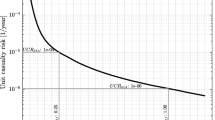Abstract
This paper presents an overview on the response of the healthcare system in the area mostly affected by the 2016 Central Italy earthquake based on specific surveys and information from local health authorities. The authors collected in the field information on the seismic response capacity of the healthcare system. They surveyed five hospital complexes from medium to small dimension whose maximum capacity was up to 50 beds. This type of hospitals are representative of those ones present in the small towns located along the Apennines mountain range, usually including few buildings (i.e. 3–5) constructed in different periods and with different structural types. In all the surveyed hospitals there were partially or totally unusable buildings causing severe limitations to the functionality of the healthcare services, forcing to move many patients to other hospitals and to stop outpatient treatment. This was due mainly to severe damage to non-structural components and, in some cases, to moderate damage to structural components. In the present paper, two hospital case studies, namely “Tolentino” and “San Severino” hospitals, both located in Marche region, are analysed and discussed in detail in order to better understand their performance to the earthquakes, by also estimating their seismic risk via simplified methods, including the WHO Safety Index and the Cosenza and Manfredi (in: Fajfar and Krawinkler (eds) Seismic design methodologies for the next generation of codes, Balkema, Rotterdam, 1997) damage index.

















Similar content being viewed by others
References
Aiello A, Pecce M, Di Sarno L, Perrone D, Rossi F (2012) A safety index for hospital buildings. Disaster Adv 5(4):270
Arias A (1970) A measure of earthquake intensity. In: Hansen RJ (ed) Seismic design for nuclear power plants. MIT Press, Cambridge, pp 438–483
Augenti N, Cosenza E, Dolce M, Manfredi G, Masi A, Samela L (2004) Performance of school buildings during the 2002 Molise, Italy, earthquake, earthquake spectra. Spec Issue Molise 2002 Earthq 20(S1):S257–S270. https://doi.org/10.1193/1.1769374
Baggio C, Bernardini A, Colozza R, Corazza L, Della Bella M, Di Pasquale G, Dolce M, Goretti A, Martinelli A, Orsini G, Papa F, Zuccaro G (2007) Field manual for post-earthquake damage and safety assessment and short term countermeasures (AeDES). European Communities, JRC Sci Tech Rep
Biondi S, De Sortis A, Di Pasquale G, Nuti C, Orsini G, Sanò T, Vanzi I (1998) Comportamento di ospedali durante il terremoto umbro-marchigiano del settembre 1997. Ingegneria Sismica 15(1):22–35
Chapin E, Daniels A, Elias R, Aspilcueta D, Doocy S (2009) Impact of the 2007 Ica earthquake on health facilities and health service provision in southern Peru. Prehosp Disaster Med 24(4):326–332
Comitè Europeén de Normalisation (CEN) (2004) EN 1998-1:2004 Eurocode 8: design of structures for earthquake resistance—part 1: general rules, seismic actions and rules for buildings, Brussels
Cosenza E, Manfredi G (1997) The improvement of the seismic-resistant design for existing and new structures using damage criteria. In: Fajfar P, Krawinkler H (eds) Seismic design methodologies for the next generation of codes. Balkema, Rotterdam, pp 119–130
Di Sarno L, Yenidogan C, Erdik M (2013) 2013 Field evidence and numerical investigation of the Mw = 7.1 October 23 Van, Tabanlı and the Mw > 5.7 November earthquakes of 2011. Bull Earthq Eng 11(1):313–346. https://doi.org/10.1007/s10518-012-9417-0
GdL INGV-DPC, 2016, in Gruppo di Lavoro INGV sul terremoto di Amatrice 294 (2016) Secondo rapporto di sintesi sul Terremoto di Amatrice Ml 6.0 del 24 Agosto 2016 295 (Italia Centrale). https://doi.org/10.5281/zenodo.154400
Grunthal G (ed.) (1998) European Macroseismic Scale 1998 (EMS-98). European Seismological Commission, sub commission on Engineering Seismology, working Group Macroseismic Scales. Conseil de l’Europe, Cahiers du Centre Europeen de Geodynamique et de Seismologie, vol 15. Luxembourg
Housner GW (1975) Measures of severity of earthquake ground shaking. In: Proceedings of the U.S. national conference on earthquake engineering, Earthquake Engineering Research Institute, Ann Arbor, MI
Inter-Agency Standing Committee (IASC) (2005) Humanitarian health cluster: Pakistan earthquake. Consolidated Health Situation Bulletin #2, 27 Oct 2005
Jacques CC, McIntosh J, Giovinazzi S, Kirsch TD, Wilson T, Mitrani-Reiser J (2014) Resilience of the Canterbury hospital system to the 2011 Christchurch earthquake. Earthq Spectra 30(1):533–554
Lanzano G, Luzi L, Pacor F, Puglia R, D’Amico M, Felicetta C, Russo E (2016) Preliminary analysis of the accelerometric recordings of the August 24th, 2016 MW 6.0 Amatrice earthquake. Ann Geophys. https://doi.org/10.4401/ag-7201
Masi A, Vona M, Mucciarelli M (2011) Selection of natural and synthetic accelerograms for seismic vulnerability studies on RC frames. J Struct Eng 137(3):367–378
Masi A, Santarsiero G, Gallipoli MR, Mucciarelli M, Manfredi V, Dusi A, Stabile TA (2013) Performance of the health facilities during the 2012 Emilia earthquake and Analysis of the Mirandola Hospital case study. Bull Earthq Eng 12(5):2419–2443
Masi A, Di Sarno L, Manfredi G, Santarsiero G, Giovinazzi S, Mitrani-Reiser J (2015) Seismic risk of Italian hospitals: analysis of assessment results to define criteria for intervention prioritization. In: Italian national conference on earthquake engineering “ANIDIS”, L’Aquila, Italy
Masi A, Santarsiero G, Digrisolo A, Chiauzzi L, Manfredi V (2016) Procedures and experiences in the post-earthquake usability evaluation of ordinary buildings. Bollettino di Geofisica Teorica ed Applicata 57(2):199–200
Masi A, Chiauzzi L, Santarsiero G, Manfredi V, Biondi S, Spacone E, Del Gaudio C, Ricci P, Manfredi G, Verderame GM (2017a) Seismic response of RC buildings during the Mw 6.0 August 24, 2016 Central Italy earthquake: the Amatrice case study. Bull Earthq Eng (in press)
Masi A, Santarsiero G, Chiauzzi L, Gallipoli M, Piscitelli S, Vignola L, Bellanova J, Calamita G, Perrone A, Lizza C, Grimaz S (2017b) Different damage observed in the villages of Pescara del Tronto and Vezzano after the M6.0 August 24, 2016 central Italy earthquake and site effects analysis. Ann Geophys. https://doi.org/10.4401/ag-7271
Post Disaster Needs Assessments (PDNA) (2010) Guidance for health sector assessment to support the post disaster recovery process, version 2.2. World Health Organization, Humanitarian Health Action
Price HJ, De Sortis A, Schotanus M (2012) Performance of the San Salvatore Regional Hospital in the 2009 L’Aquila earthquake. Earthq Spectra 28:239–256
ReLUIS-INGV Workgroup (2016) Preliminary study on strong motion data of the 2016 central Italy seismic sequence V6. http://www.reluis.it
UNISDR - Hyogo Framework for Action (2005–2015) International Strategy for Disaster Reduction final report of the World Conference on Disaster Reduction (A/CONF.206/6). http://www.unisdr.org/wcdr
United Nations Children’s Fund (UNICEF) (2004) Crisis appeal earthquake in Bam, Iran. http://www.unicef.org/emerg/files/Emergencies_Iran_Flash_Appeal_130104.pdf
WHO (World Health Organization) (2008) PAHO (Pan American Health Organization), Hospital Safety Index, Guide for evaluators
World Health Organization WHO (2006) Health facility seismic vulnerability evaluation—a handbook—, outlined the structural vulnerability function. WHO Regional Office for Europe DK-2100 Copenhagen, Denmark
Zambonelli E, De Nardis R, Filippi L, Nicoletti M, Dolce M (2011) Performance of the Italian strong motion network during the 2009, L’Aquila seismic sequence (central Italy). Bull Earthq Eng 9(1):39–65
Author information
Authors and Affiliations
Corresponding author
Rights and permissions
About this article
Cite this article
Santarsiero, G., Di Sarno, L., Giovinazzi, S. et al. Performance of the healthcare facilities during the 2016–2017 Central Italy seismic sequence. Bull Earthquake Eng 17, 5701–5727 (2019). https://doi.org/10.1007/s10518-018-0330-z
Received:
Accepted:
Published:
Issue Date:
DOI: https://doi.org/10.1007/s10518-018-0330-z




